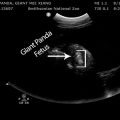ICYMI: Highlights from the week that was July 1 – July 7, 2018
No one can keep up with everything, so let us do it for you. We’ll gather the top Smithsonian stories from across the country and around the world each week so you’ll never be at a loss for conversation around the water cooler.
“Planet of the Apes” may turn out to be a documentary as we learned that capuchin monkeys have already entered the Stone Age. Keep looking over your shoulder…

Golden lion tamarins born at National Zoo
WTOP, July 2
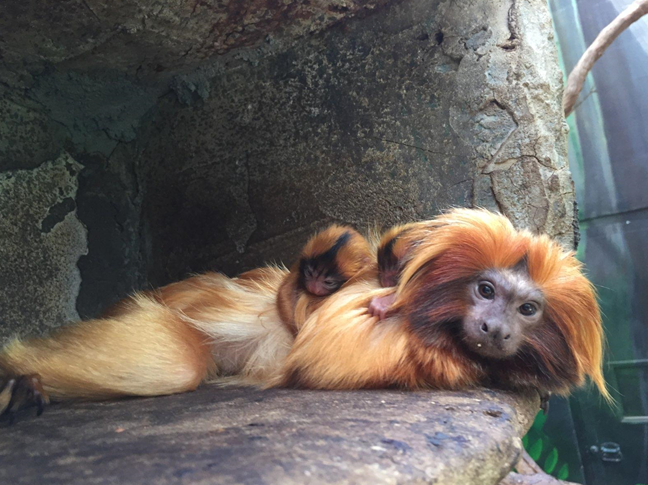
The Smithsonian’s National Zoo is celebrating the birth of two endangered golden lion tamarin infants. (Courtesy National Zoo)
It’s no monkey business. The National Zoo is celebrating the birth of two endangered animals.
Two golden lion tamarins were born at the zoo on Friday, June 29, to first-time parents Mo and Izzy.
The endangered monkeys have been clinging to their mother Izzy’s back since birth but will soon transfer to their father, Mo, who will carry them at all times except when they are nursing, according to the zoo. Read more from Valerie Bonk for WTOP.
The American backyard – images of families spending quality time together across America as the country enjoyed post-World War II peace in the 1950s and 60s
Daily Mail, July 4

With summer now in full swing, the scent of mesquite smoke can be found wafting from backyards into the air in neighborhoods across the country. There’s nothing more quintessentially American than families spending summer holidays like the 4th of July relaxing and barbequing in their backyards. A new exhibit from the Smithsonian Institution Traveling Exhibition Service is shedding new light on how Americans came to claim the backyard as their haven from life. Pictured above is a home in Long Beach, California in the 1950s part of the exhibit. (Courtesy of The Huntington Library)
With summer now in full swing, the scent of mesquite smoke can be found wafting from backyards into the air in neighborhoods across the country. There’s nothing more quintessentially American than families spending summer holidays like the Fourth of July relaxing and barbequeing in their backyards.
For many, taking refuge ‘out back’ to relax, garden, or tend a lawn goes hand-in-hand with summer for most.
But the phenomenon of suburban outdoor living space is more recent than one might think. The concept of having backyards didn’t truly take hold across the country until post-World War II when Americans began focusing on leisure and relaxation during the 1950s. Read more from Regina F. Graham for the Daily Mail.
The American Flag Was Sewn in Part By A Teenage Black Girl
The history that’s not in your school books.
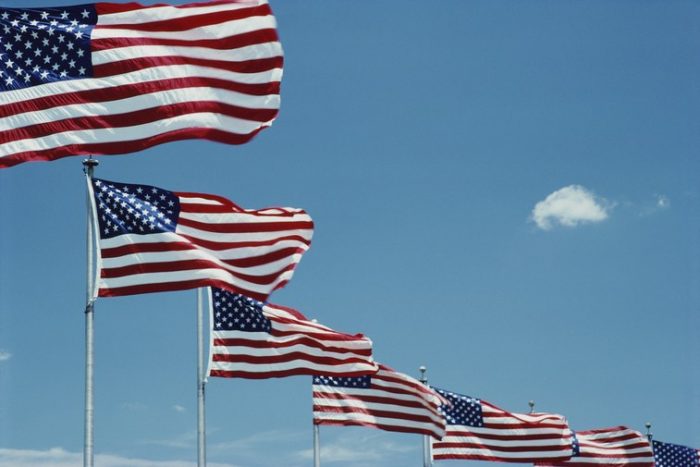
Getty Images / Barbara Alper
Teen Vogue, July 4
OG History is a Teen Vogue series where we unearth history not told through a white, cisheteropatriarchal lens.
In a famous oil painting, artist R. McGill Mackall depicts Mary Pickersgill, the woman most known for designing the Star-Spangled Banner in Baltimore to celebrate United States’ victory against Great Britain during the War of 1812. In the painting, Mackall included Pickersgill’s daughter, Caroline, and one of her nieces, who also helped design the flag that would go on to inspire Francis Scott Key to write the national anthem. Missing from the painting, however, is Grace Wisher, the 13-year-old black girl who was an indentured servant to Pickersgill, and is often overlooked in the storytelling of the nation’s most visual emblem, which has caused much contestation throughout history. Read more from Rikki Byrd for Teen Vogue.
How IVF might save northern white rhinos, the world’s most endangered species
The Los Angeles Times, July 4
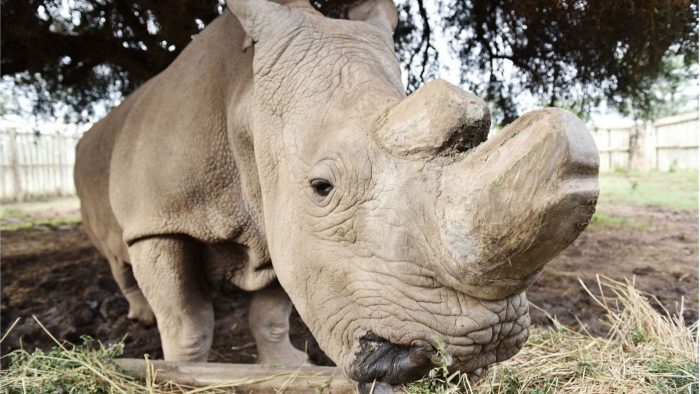
Sudan, above, was the last male northern white rhino. He died in Kenya in March. Researchers hope to save the species from total extinction with the help of assisted reproduction technologies. (Sun Ruibo / Xinhua / Sipa USA / TNS)
Perhaps no species on Earth is as close to extinction as the northern white rhinoceros.
The last male, known as Sudan, died in March at the age of 45. The two remaining females, Najin and Fatu, have been deemed infertile.
Still, researchers say it is too soon to write off the northern white rhino for good. Reproductive specialists may be able to create them in the lab.
In research published Wednesday, scientists show how techniques that help infertile couples conceive children could be put to use to save the critically endangered rhinos. Read more from Deborah Netburn for the Los Angeles Times.
Why Writing The Word ‘Freedom’ Is More Powerful Than Typing It
NPR, July 3
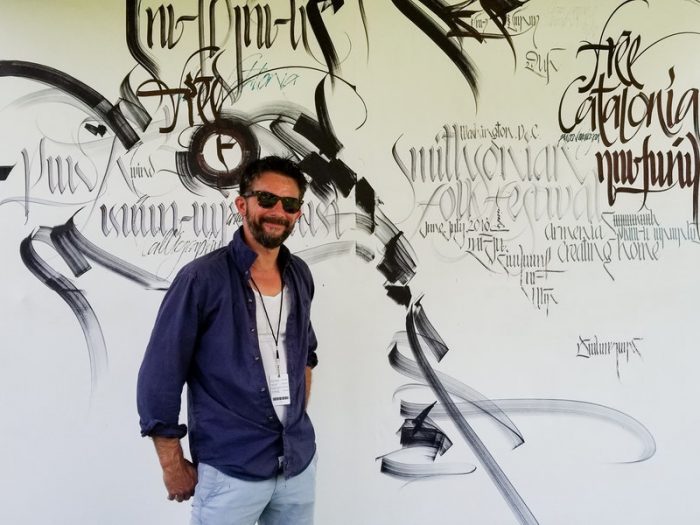
Armenian artist Ruben Malayan stands in front of a poster at his booth at the Smithsonian Folklife Festival in Washington, D.C.
(Malaka Gharib/NPR)
Ruben Malayan, a lean, goateed artist, is teaching kids and visitors at the Smithsonian Folklife Festival in Washington, D.C., to write the letter “A” in Armenian calligraphy.
On a sheet of computer paper, he inks a shape that looks like an old English “W,” using a pen with a flat metal nib. His strokes — black line after black line, in perfect symmetrical succession — are hypnotic.
“It’s like a rhythm, like you’re playing the piano,” Malayan says as he draws. “Long notes, long lines, short notes, short lines.” The students watch him for a beat, then practice scratching out their own lines. Over the past two weeks, he has been teaching workshops and talking about Armenian calligraphy under a little white tent at the festival. Read more from Malaka Gharib for NPR’s Goats and Soda.
These tiny monkeys have entered their Stone Age with a bang
The Washington Post, July 6
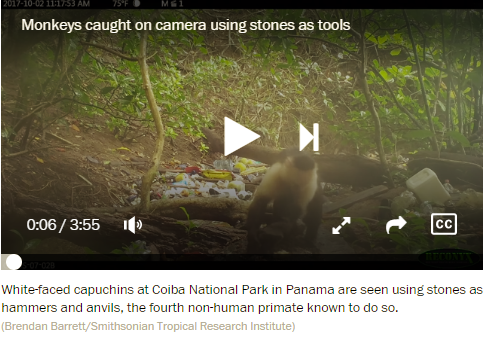
For years, scientists at the Smithsonian Tropical Research Institute in Panama had whispered about the remote island where monkeys used stone tools. A botanist had witnessed the phenomenon during a long-ago survey — but, being more interested in flora than fauna at the time, she couldn’t linger to investigate. A return to the site would require new funds, good weather for a treacherous 35-mile boat ride, and days of swimming, hiking and camping amid rocky, wave-pounded shorelines and dense tropical forest.
“For a while, it kind of just stayed a rumor,” said Brendan Barrett, a behavioral ecologist at the Max Planck Institute for Ornithology in Germany and a visiting researcher at the STRI. Read more from Sarah Kaplan for the Washington Post.
No giant panda cub this year, National Zoo announces
The Washington Post, July 5

Mei Xiang, a female giant panda, is seen in February enjoying a fruit pop snack. (Jonathan Newton/The Washington Post)
Alas, there will be no giant panda cub this year.
It would have been nice in this season of heat and hot air, but the National Zoo said Thursday that experts have determined that the female giant panda, Mei Xiang, is not pregnant.
It’s the second year in a row that Mei Xiang has had a false pregnancy .
Mei Xiang will turn 20 this month and is near the end of her reproductive life cycle, the zoo said last year, but pregnancy was still possible for her. Read more from Michael Ruane for the Washington Post.
National Zoo Proposes Security Checkpoints, Reduced Access
The Smithsonian Institution wants to ramp up security at the National Zoo, which is currently its only public venue without screenings in place.
Associated Press, July 6
he Smithsonian Institution wants to ramp up security at the National Zoo, which is currently its only public venue without screenings in place.
News outlets report that the National Capital Planning Commission on July 12 will review the proposed development plan, which includes additional perimeter fencing to close gaps and reducing the number of pedestrian entrances from 13 to three. A fourth entrance would be added at a parking garage that has yet to be constructed.
Citing more than 25,000 daily visitors during peak season, the Smithsonian said in a statement that it wants to implement “access controls,” with bag checks and other forms of visitor screening at permanent security pavilions. The National Zoo says it has experienced several security-related incidents, leading to temporary checkpoints this spring.
Posted: 9 July 2018



